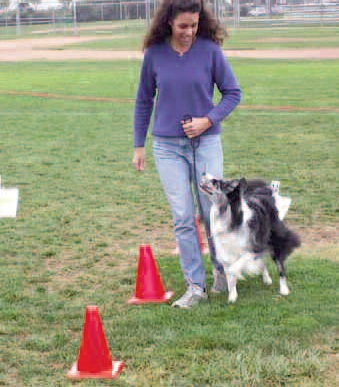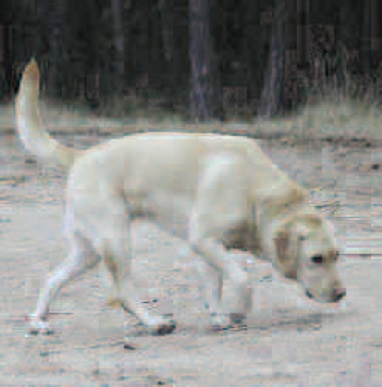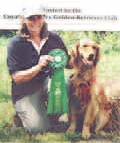New titling program from AKC
TRAINING YOUR PERFORMANCE DOG
by Carolyn Fuhrer
AKC has a new titling program: The AKC Trick Dog. It is designed so dogs and their owners can have fun learning tricks together.
There are four levels of titles in AKC Trick Dog:
- AKC Novice Trick Dog TKN
- AKC Intermediate Trick Dog TKI
- AKC Advanced Trick Dog TKA
- AKC Trick Dog Performer TKP
AKC approved CGC (Canine Good Citizen) evaluators may observe the tricks and sign as evaluators for the Novice, Intermediate and Advanced AKC titles.
For the performer level, all tricks must be done as a part of a routine and a video link must be provided to AKC for evaluation.
Here are the criteria for the four levels of titles:
Novice
Perform 10 tricks, or have the CGC on record at AKC and perform five tricks. May use food/toys as a lure (to guide the dog into position) and may use food as reinforcer and clickers to mark behavior. Dog will do each trick two times for the evaluator.
Intermediate
Perform 10 tricks from the intermediate tricks list. May not use food/toys as a lure except where specifically permitted. May use food as a reinforcer and also clickers to mark behavior. Dog will do each trick two times for the evaluator.
Advanced
Perform five tricks from the advanced tricks list. May not use food/toys as a lure. May use food as a reinforcer and may also use clickers to mark behaviors. Dog will do each trick once for the evaluator.
Performer
Perform a total of 10 previously learned or new tricks from the Novice, Intermediate and Advanced titles. Must do at least two intermediate and two advanced tricks. May not use food/toys as a lure. May use food as reinforcer and may also use clickers to mark behaviors.
You can find all the tricks listed at the section on the AKC website devoted to Trick Dog: www.akc.org/about-trick-dog/
The most exciting news is that MCKC (Mid Coast Kennel Club of Maine) will be offering a CGC test and Novice, Intermediate and Advanced Trick Dog tests at their show at the Union Fairgrounds, in Union, on Saturday, September 2, 2017, after Best of Breed. So, come and enjoy the dog show, maybe enter one of the tests or, if you are not ready yet, come and watch the CGC and trick tests and see what its all about.
For more information about the tests: contact Kathy Duhnoski at kduhnoski@myfairpoint.net.
Carolyn Fuhrer has earned over 90 AKC titles with her Golden Retrievers, including 2 Champion Tracker titles. Carolyn is the owner of North Star Dog Training School in Somerville, Maine. She has been teaching people to understand their dogs for over 25 years. You can contact her with questions, suggestions and ideas for her column by e-mailing carolyn@dogsatnorthstar.com.



 TRAINING YOUR PERFORMANCE DOG
TRAINING YOUR PERFORMANCE DOG Several new exercises have been added to the existing Rally classes and handlers should be aware of these as they may be included in classes after November 1. Novice has 6 new signs and Advanced and Excellent class each have 5 new signs. The wording on some of the signs has also changed.
Several new exercises have been added to the existing Rally classes and handlers should be aware of these as they may be included in classes after November 1. Novice has 6 new signs and Advanced and Excellent class each have 5 new signs. The wording on some of the signs has also changed. TRAINING YOUR PERFORMANCE DOG
TRAINING YOUR PERFORMANCE DOG So how do you communicate this to your dog?
So how do you communicate this to your dog? TRAINING YOUR PERFORMANCE DOG
TRAINING YOUR PERFORMANCE DOG TRAINING YOUR PERFORMANCE DOG
TRAINING YOUR PERFORMANCE DOG